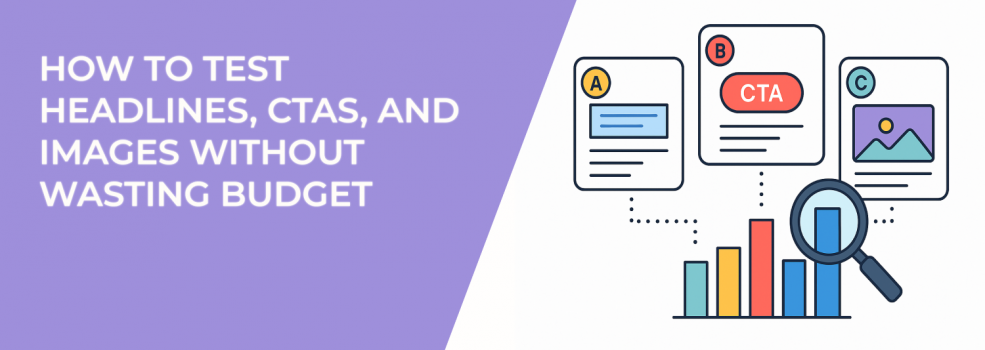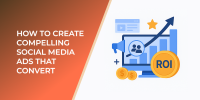Testing your Facebook or Instagram ad creative isn’t optional anymore — it’s how you survive in a competitive feed. But here’s the thing: most advertisers know they need to test, and yet... they still waste money doing it.
Why?
Because testing the wrong way — wrong format, wrong audience, wrong setup — is like throwing cash into the void and hoping for data.
Let’s talk about how to test your headlines, CTAs, and images the smart way. Not the expensive way.
Why Testing Creative Elements is Non-Negotiable
Your copy and visuals are your digital storefront. They determine scroll or stop. Tap or pass.
A strong CTA can double your conversion rate. A weak image can silently kill your CPM. And headlines? One word can tank your entire campaign.
But how do you know what works? You test.
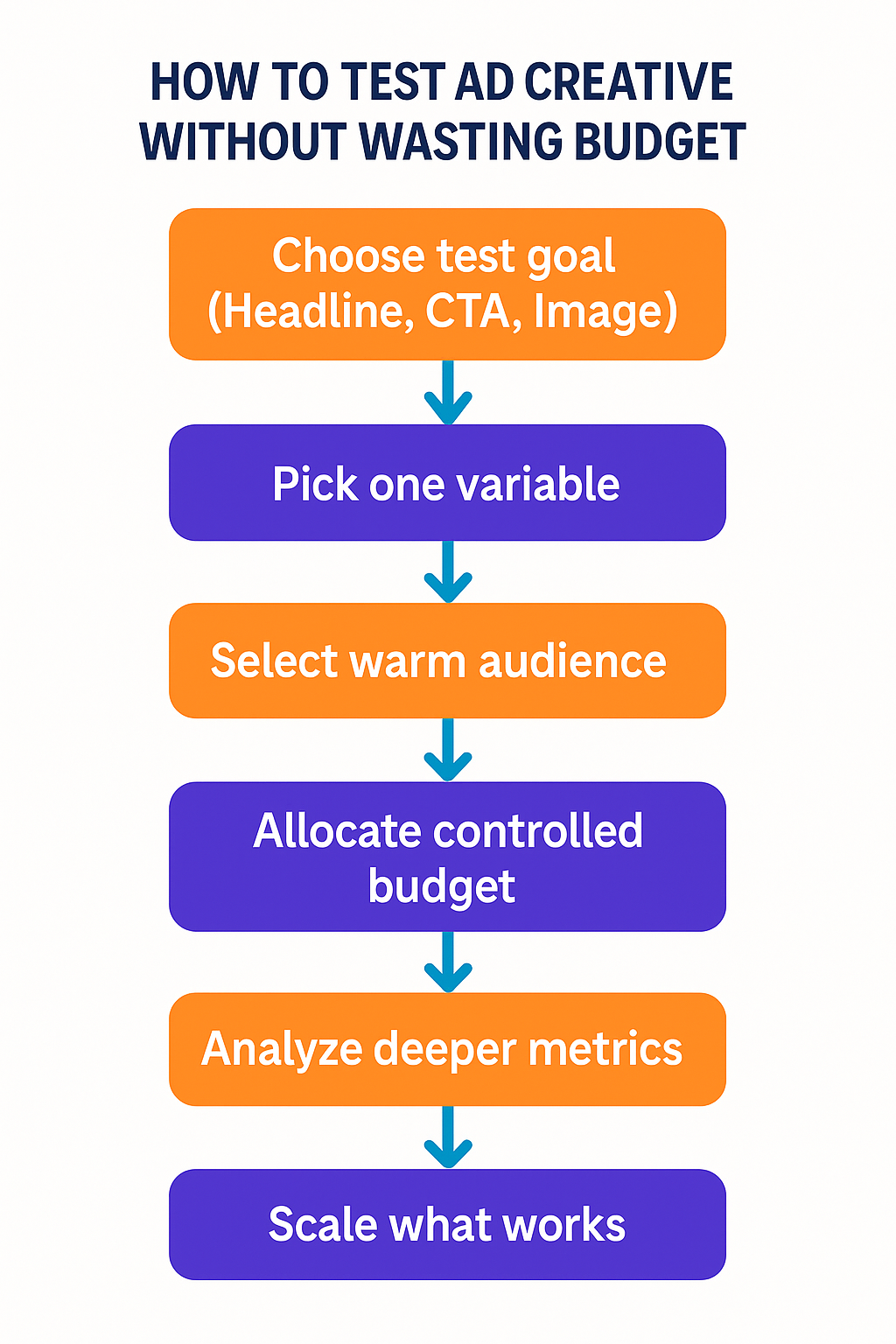
Testing is how you evolve your creative instead of guessing what might click. But if you're running five variations of the same ad to cold audiences with limited budget — you're not testing, you're gambling.
Need a more structured approach? Here’s a beginner’s guide to creative testing that outlines what to test first and how.
Step 1: Structure Tests with Intent, Not Chaos
Before you launch anything, ask yourself:
-
What am I actually testing?
-
What’s my control?
-
What metrics will define success?
Too many marketers run “everything vs everything” tests. New image, new CTA, new copy — all in one ad. If it works, great... but what part worked? You’ll never know.
Instead, isolate one variable at a time.
Test one headline across three ads. Then one image. Then one CTA. Keep everything else identical.
Want to test faster without bloating your budget? Use Facebook's Dynamic Creative feature to mix and match creative elements — but keep a close eye on performance breakdowns. Sometimes the best combination gets buried.
Also, learn how to spot performance drops early in this guide to underperforming Facebook ads.
Step 2: Use Warm Audiences for Smarter Data
Testing on cold traffic can drain your budget faster than you think — especially if your ad set "may get zero" due to poor relevance or narrow targeting (here’s why that happens).
Instead, test on retargeting audiences:
-
Website visitors from the last 30 days,
-
Add-to-carts who didn’t convert,
-
Engaged users on Instagram.
These folks are already familiar with your brand. They’ll give you more accurate feedback on what actually makes them click — without needing a huge budget.
Not sure how to set up retargeting properly? Follow this step-by-step guide to Facebook retargeting.
Step 3: Focus on Metrics That Actually Matter
Not all clicks are good clicks.
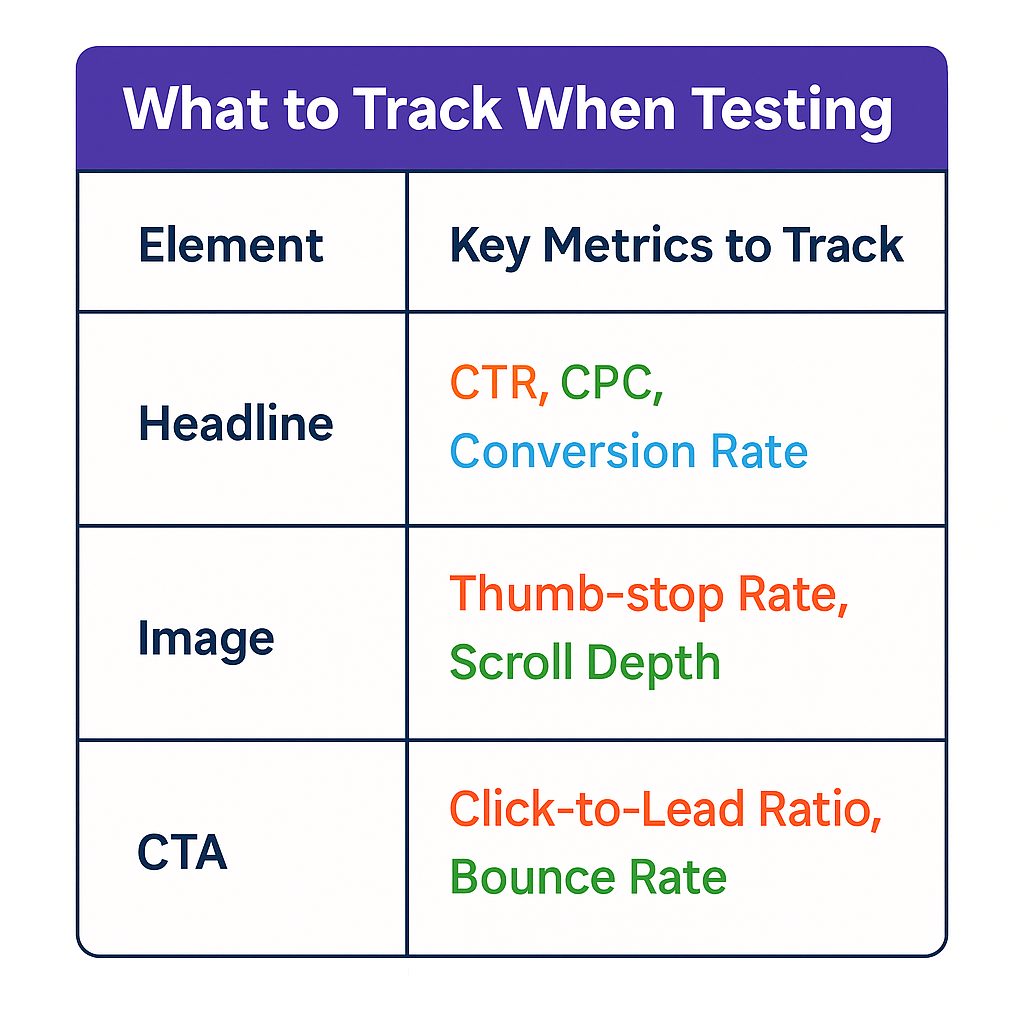
When testing headlines, don't just chase CTR. Look at:
-
CPC (Cost per click): Is it efficient?
-
CTR vs. Conversion Rate: Are people sticking around after they click?
-
Scroll depth or time on page (if using landing pages): Is your message holding attention?
With images, monitor:
-
Thumb-stop rate (video view time or first-second engagement),
-
Click distribution: Is your image misleading people into clicking, but not converting?
And for CTAs:
-
Click-to-lead ratio: Are people clicking "Get Offer" but bouncing immediately?
-
Mobile vs. desktop response: Does the CTA layout match the platform?
If you're looking for a more granular breakdown, this article on how to analyze Facebook ad performance beyond CTR and CPC is a must-read.
Step 4: Don’t Test on Low Spend — Test on Controlled Spend
Here’s a trap: allocating $10 per ad set across 10 variations.
The result? Facebook can’t even optimize. Each test dies before it gathers enough data.
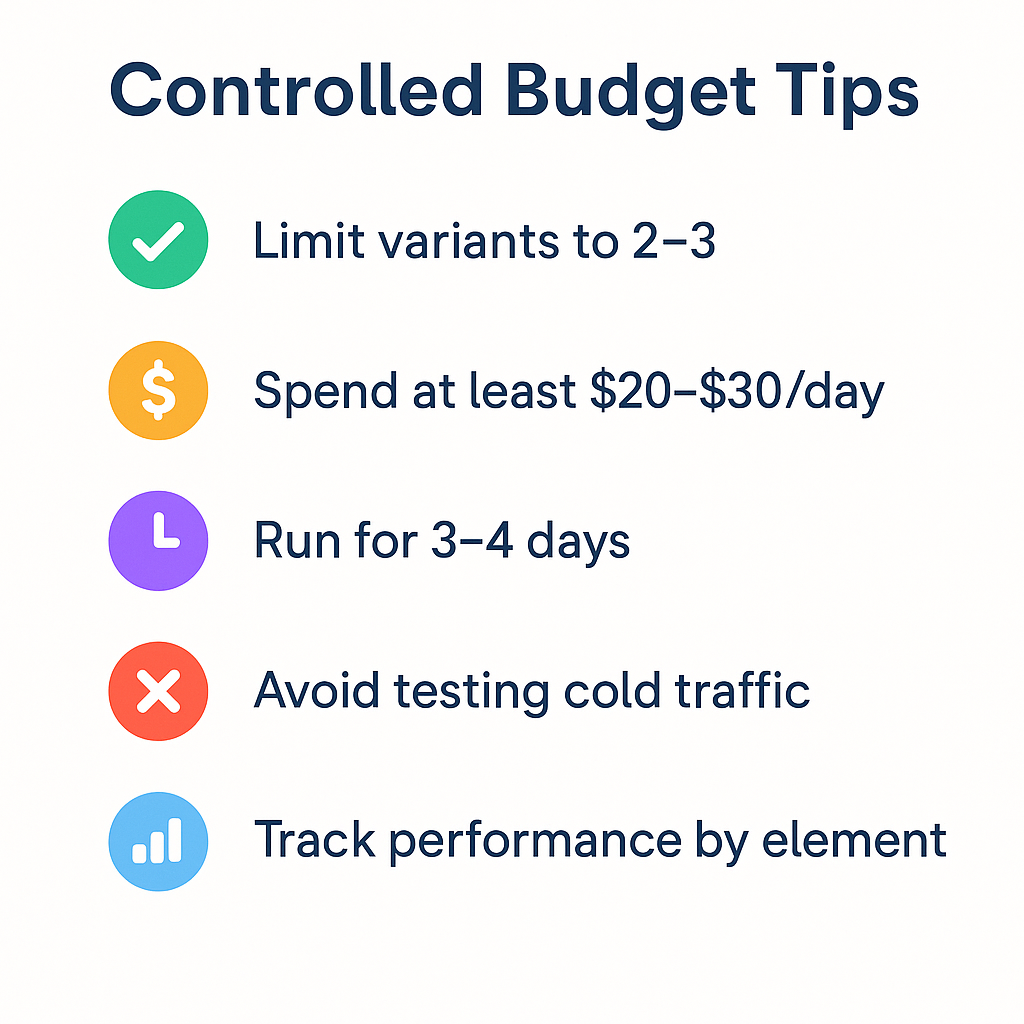
Instead:
-
Choose 2–3 versions max,
-
Spend $20–$30 per day on the test ad set,
-
Let it run for 3–4 days minimum.
This way, you get enough impressions and meaningful metrics without burning through your total budget. You’re not spending more — you're spending smarter.
Step 5: Document Everything — Even the Failures
It’s tempting to just kill a poor performer and move on. But the best advertisers keep creative testing logs.
Note:
-
What headline you used,
-
What offer you tested,
-
What audience you targeted,
-
What the image looked like,
-
CTR, CPC, CPM, and conversion rate.
Over time, you’ll notice patterns.
Maybe urgency words work better for your fitness product. Maybe emotional CTAs outperform discount-based ones. But you won’t know unless you track it.
Also, if your ads are converting but scaling is a challenge, you might want to explore how to finish the Facebook learning phase quickly — it can speed up optimization and testing.
Smart Testing Saves Money — Guessing Costs It
Testing doesn’t mean running endless variants until something sticks. It means making clear, informed choices — backed by data, not hope.
Done right, testing your headlines, CTAs, and images won't just save you money. It’ll give you the insights you need to scale.
So the next time you’re setting up a campaign, pause and ask:
What am I really learning from this test?
If the answer is “not much,” it’s time to change how you test.
